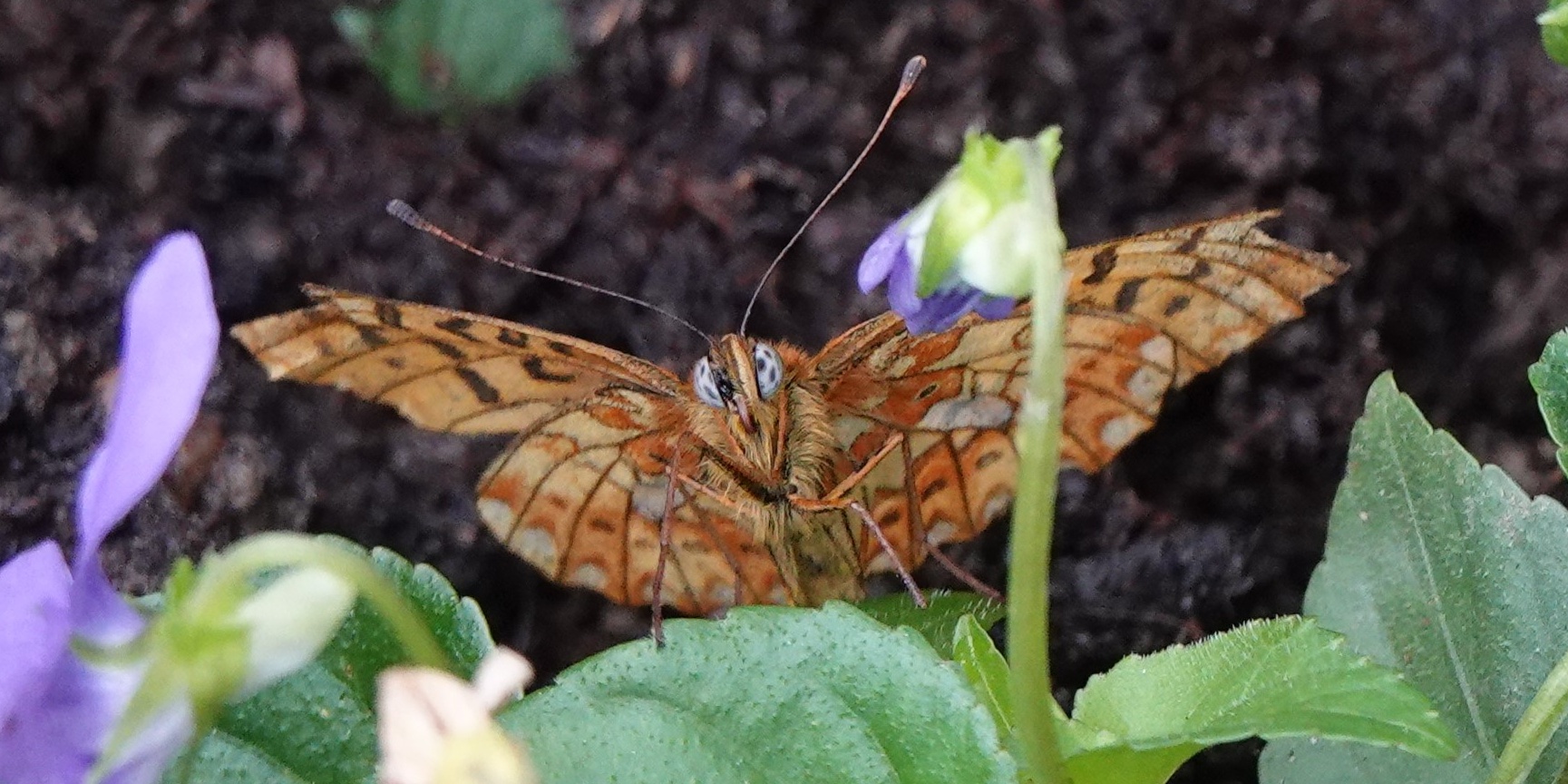
Pearl-bordered fritillary: At risk butterfly lays foundations for her species’ recovery
A single female butterfly is playing a crucial double role in her species’ survival on these islands. This pearl-bordered fritillary (Boloria euphrosyne) and her offspring are at the heart of a reintroduction effort in the Malvern Hills. And as part of the Darwin Tree of Life project, she will also provide the reference genome for her endangered species.
“I think it’s wonderful that we’ve got this butterfly which is doing two things,” says Mel Mason, the driving force behind the Malvern reintroduction project. “This female is going to start a new colony on a site where the species had become extinct 30 years previously. And it will have its genome sequenced so that other sites can benefit across the country.”
Missing in the Malverns
Once widespread, the number of sites at which pearl-bordered fritillaries can be spotted has plunged 91% since the 1970s. B. euphrosyne is arguably the second most at risk butterfly in Britain, only trumped in scarcity by the critically endangered high brown fritillary (Fabriciana adippe) – another butterfly that disappeared from the Malverns at roughly the same time.
“When I retired, I got involved in a hobby I’d had as a child which was chasing butterflies. But it rapidly turned into a lot more,” explains Mel, formerly a science teacher and now Vice Chairman of West Midlands Butterfly Conservation. “I started learning a lot about conservation work, then leading work parties, then leading entire projects.”
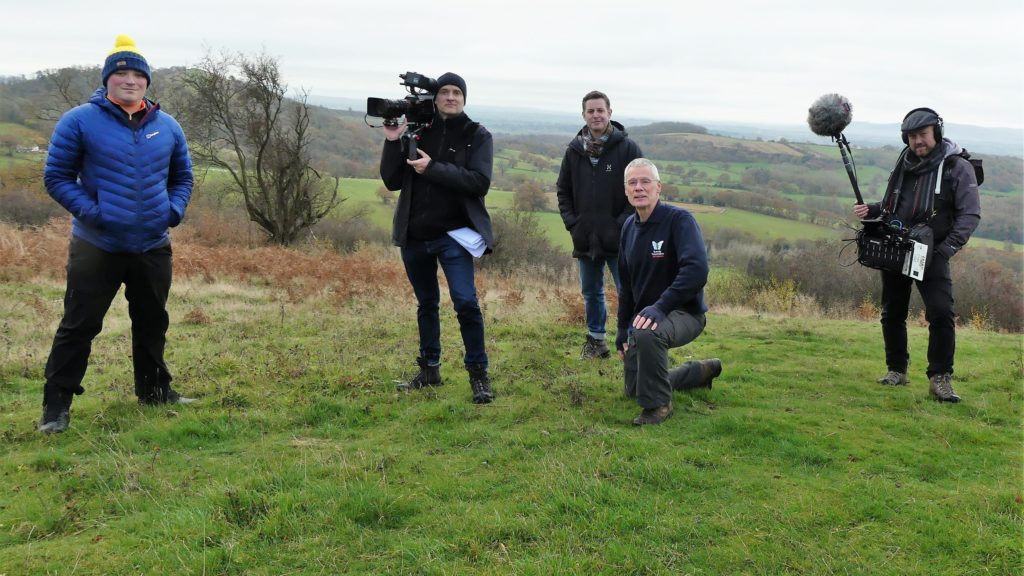
The pearl-bordered fritillary initiative Mel is spearheading in the Malverns will see the species reintroduced to three separate sites. Despite being within one or two kilometres of one another, each is in a different county – Herefordshire, Worcestershire and Gloucestershire. His team will then monitor the success of these reintroductions, and ultimately Mel wants to create wildlife corridors connecting the Malvern sites to other B. euphrosyne populations further afield.
“These butterflies are very much threatened, and they will become extinct in this country if we don’t manage their habitat, build these wildlife corridors and allow populations to expand,” Mel insists.
Starting a new line
There are two main challenges to these reintroduction efforts. First, the habitat needs to be returned to a state fit for the caterpillars to feed and mature into adults. This meant encouraging three different landowners to change their land usage. Instead of grazing these sites, bracken must be allowed to grow. The bracken litter provides the ideal natural shelter for the caterpillars and also encourages the growth of their favourite food plant, common dog violets (Viola riviniana).
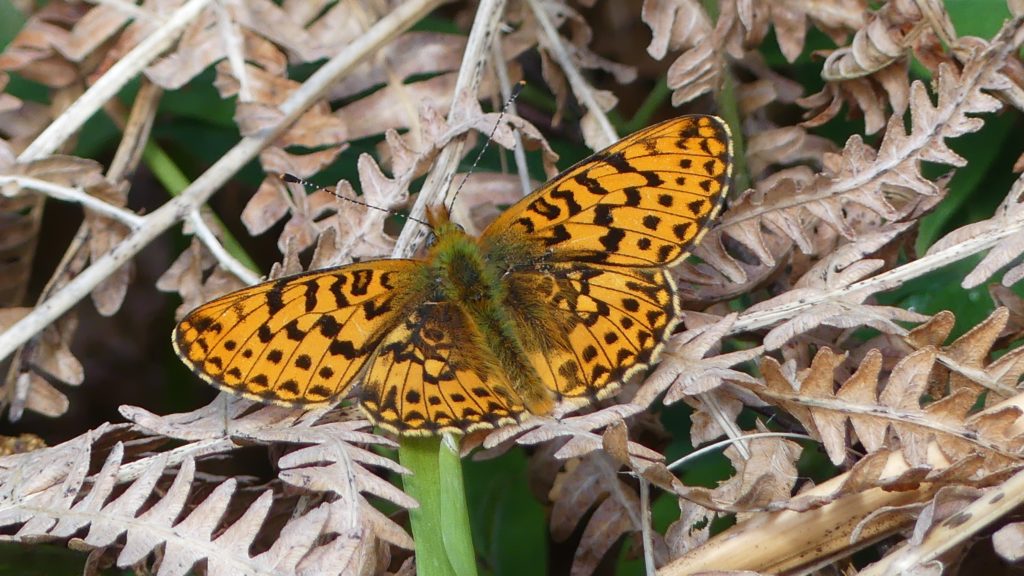
The second challenge was procuring some butterflies for release. Mel approached several ‘donor sites’ where pearl-bordered fritillaries currently breed. But April and May of 2021 were so cold and wet that only one site – the Wyre Forest – had sufficient numbers to release to the Malvern programme. They provided Mel with four gravid (egg-carrying) females, one of which has gone on to become the DToL specimen for our reference genome.
Because of the difficulty of obtaining adults, Mel decided a captive breeding programme was the best way to get the numbers needed. From the eggs of those four original females, he and his wife Liz have now successfully reared 160 caterpillars from three butterflies in an impressive series of pots, given the opulent moniker the “Pearl Hotel”. Meanwhile, another volunteer, Ian Duncan, has reared more than 20 from the fourth butterfly in the “Pearl Motel”.
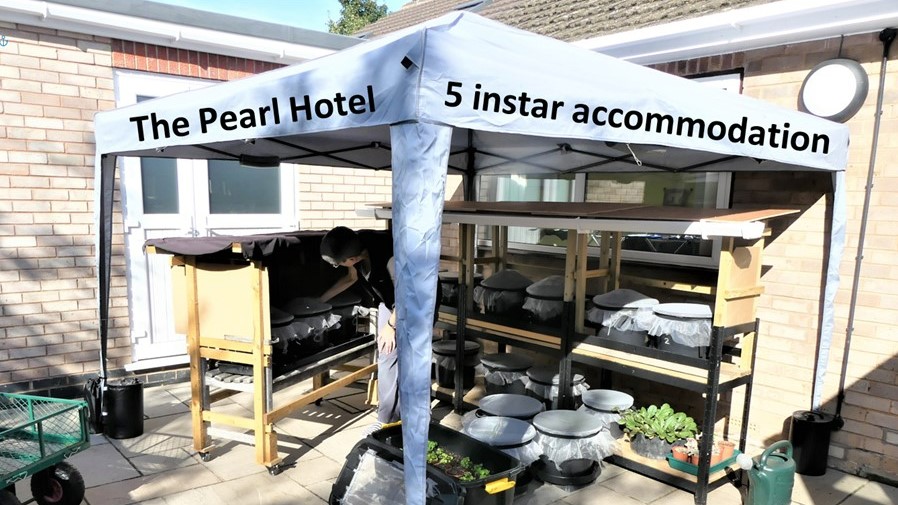
These pots are carefully protected from pathogens and parasites: filled with sterilised compost, plenty of tasty violets washed in detergent solution for four hours, and microwaved oak leaves (600W for 2 minutes) to provide shelter.
At time of writing, the caterpillars are in diapause, a resting state they go into over winter. They will emerge in March, feed on more violets, then moult and enter their fifth and final instar stage before adulthood. The plan is to then release a mixture of fifth-instar caterpillars and new adults onto two of the new sites on the Malvern slopes.
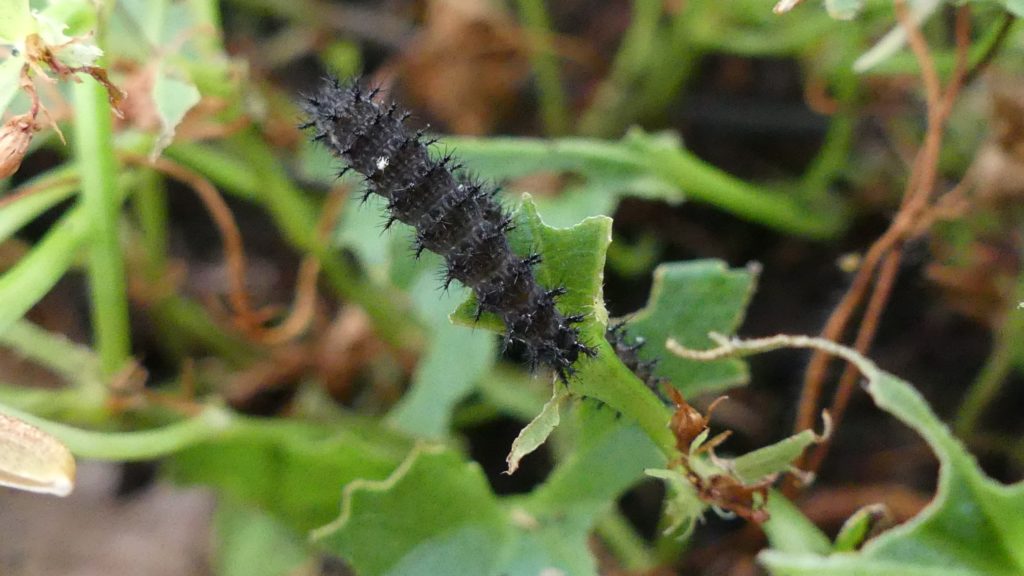
Genomics in the conservation toolkit
Laying the eggs to begin a new Malvern dynasty of B. euphrosyne was not the end of our female’s story. Already at least eight days old, and with an average adult life expectancy in the wild of six or seven days, she will go on to be immortalised as the first full-genome sequence for her species.
Mel became enthused by the possibilities of genomics after talking to Ilik Saccheri, Professor of Ecological Genetics at the University of Liverpool, who suggested this might be a powerful tool for keeping tabs on the progress of the new pearl-bordered fritillary populations. In particular, Mel was intrigued by the idea of using microsatellite markers – essentially a DNA fingerprint – to keep tabs on how our female’s offspring are interacting within the Malvern metapopulation, i.e. the combined population of all three sites.
The conservation theory behind this is that, although the butterflies were released onto three sites, one or more of those sites may become compromised at some point. That might be due to bad weather, an increase in predators, or some catastrophic localised event. To avoid succumbing to these pressures, the butterflies need alternative options.
Since each site is well within the pearl-bordered fritillaries’ range of travel, those options are there. It’s a matter of whether the insects are willing to make the journey. DNA can be used to answer this question – and might then prompt a change in conservation tactics.
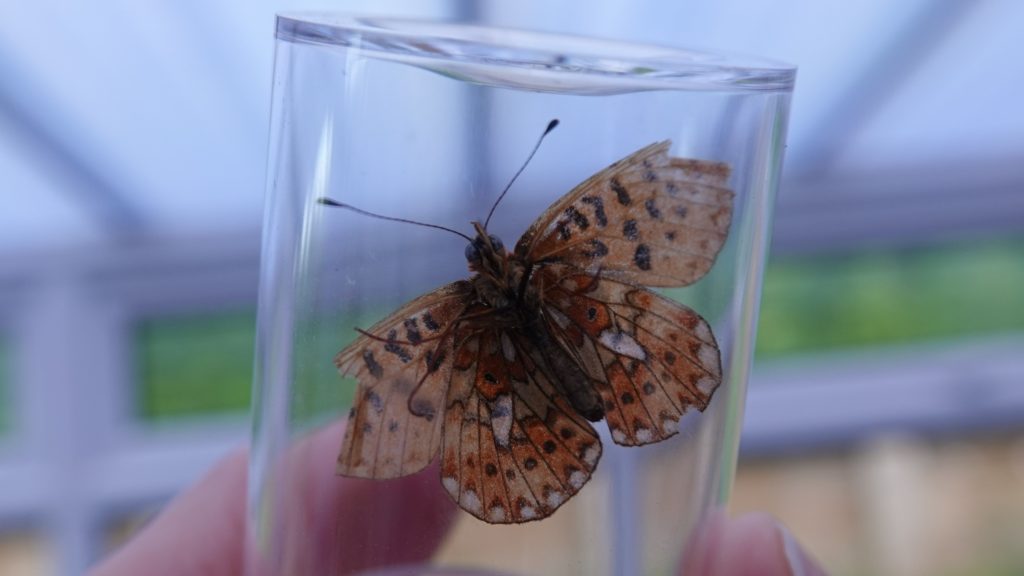
End of a life cycle
On Tuesday, June 8, 2021, the ageing butterfly was gently removed from her enclosure into a labelled plastic wallet, sealed in a petri dish, and snap frozen in dry ice to prevent her DNA deteriorating after death.
“That was very high stress for me – this was a last chance moment,” Mel recalls. “But the butterfly behaved very well, not knowing what her fate was, of course.”
She was then transported to Professor Saccheri in Liverpool, and ultimately to the Wellcome Sanger Institute for full genome sequencing. We expect the completed genome to be published in 2022, around the same time her offspring are starting their new lives in the wild.
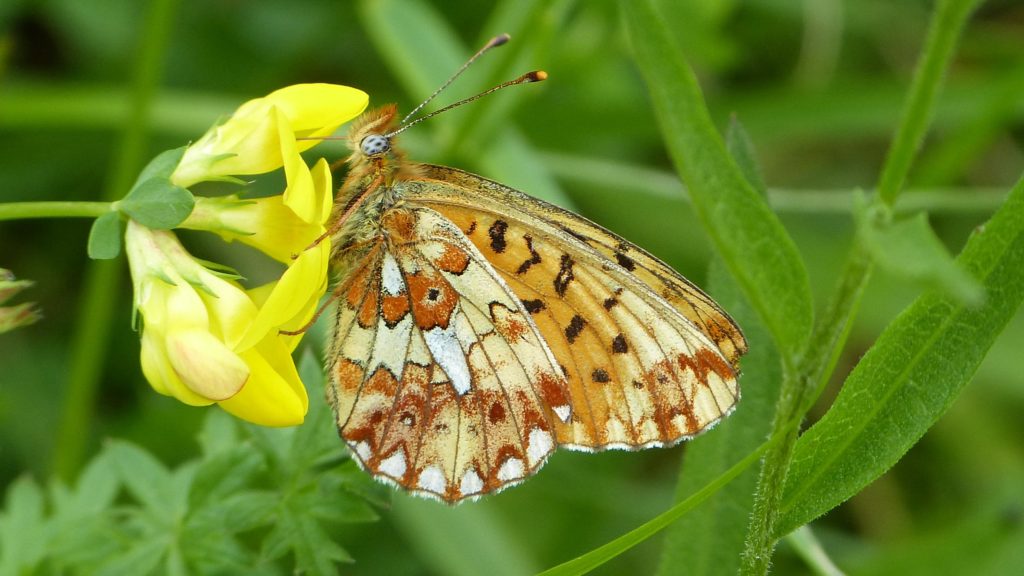
If you want to learn more about Mel Mason and his team of volunteers’ conservation work in the Malvern Hills, tune in to Countryfile on Sunday, December 12th.
